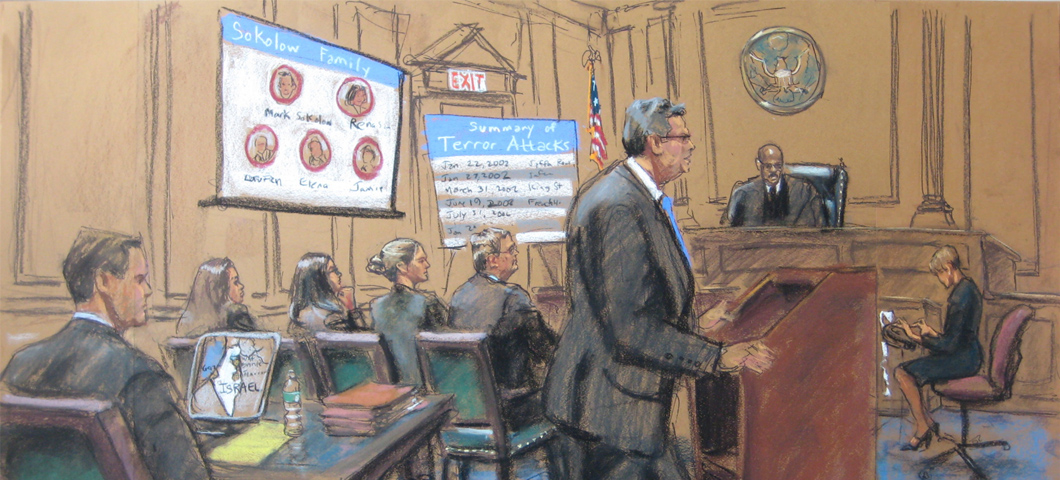Legal experts trust professional trial presentations to support their courtroom strategy.
Legal experts trust professional trial presentations to support their courtroom strategy.
Blog Article
Just How Trial Presentations Enhance Your Debate and Persuade Jurors
Test discussions work as a critical device for enhancing lawful disagreements and persuading jurors. By incorporating aesthetic help, narrative frameworks, and psychological involvement, lawyers can develop a compelling situation that resonates on multiple degrees. The calculated use visuals not only clarifies complicated info but also catches jurors' interest extra efficiently than words alone. Nevertheless, the art of narration plays a just as essential duty in changing accurate proof right into a compelling narrative, forming jurors' assumptions - trial presentations. Comprehending these elements can substantially affect test end results, raising the concern of how each component adds to this complex dynamic.

Importance of Visual Aids
Aesthetic help play an important duty in boosting the performance of test discussions, as they can considerably increase audience engagement and retention of information. In the context of a test, where jurors are charged with processing facility details, visual aids offer to streamline and make clear bottom lines. Graphes, charts, and images can share information and principles that may otherwise overwhelm or confuse jurors, enabling a more simple understanding of the proof offered.
Moreover, aesthetic aids aid in keeping juror focus throughout the procedures. By damaging the dullness of spoken statement, these devices can stress vital debates, making them more unforgettable. Efficient visual help can likewise stimulate psychological feedbacks, which can be crucial in convincing jurors to align with the presenter's story.

Crafting Engaging Stories
An engaging narrative is crucial in trial discussions, as it acts as the backbone of efficient persuasion. It permits lawyers to weave together realities, evidence, and emotional elements into a meaningful tale that resonates with jurors. This narrative structure makes it possible for jurors to comprehend the intricacies of the case while directing them with the lawyer's argument.
To craft a compelling story, attorneys should concentrate on quality and comprehensibility. This includes developing a clear protagonist-- often the client-- and describing their journey with the occasions in concern. Presenting the realities in a rational sequence enhances comprehension and preserves engagement. In addition, making use of brilliant summaries can develop mental pictures that help jurors visualize the occasions, making the story much more unforgettable.
In addition, incorporating key themes throughout the presentation reinforces the core message and aids in retention - trial presentations. The story should not just share information however additionally evoke a feeling of justice, highlighting the risks included. Ultimately, a sound narrative promotes a link in between the jurors and the case, positioning the attorney's debate as both trustworthy and compelling, thus raising the possibility of a desirable verdict

Engaging the Court Psychologically
Reliable jury engagement rests on the attorney's capability to attach with jurors on an emotional level. This link can dramatically influence jurors' perceptions click for source and their best decision-making. Using emotional appeals enables lawyers to humanize the case, transforming abstract legal concepts right into relatable experiences. By offering real-life stories or reviews, attorneys can evoke compassion and empathy, cultivating a deeper understanding of the problems at risk.
Aesthetic help, such as photographs or videos, can better boost psychological interaction, offering jurors with dazzling depictions of the situation's human aspects. Crafting a story that highlights the battles and victories of the people entailed makes sure that jurors see beyond the legal arguments and recognize the human effects of their decisions.
A lawyer's passionate delivery can reverberate with jurors, strengthening their psychological investment in the instance. It's vital to stabilize emotional allures with valid proof, making sure that jurors really feel compelled to act while remaining grounded in the reality.
Structuring Your Discussion

The body of the presentation should be rationally fractional into key points, each supported by engaging proof. It is useful to utilize narration methods to weave realities right into a story that jurors can quickly comply with. Aesthetic help, such as graphes and video clips, can enhance comprehension and interaction, assisting to highlight important items of evidence.
Real-World Study
Examining real-world instance researches offers very useful understandings right have a peek here into the art of test presentations and persuasion. The defense group successfully used a strategy that combined top-level specialist testimonies with multimedia presentations, which mesmerized jurors and inevitably affected their decision.
An additional notable instance is the "McDonald's Coffee Situation," where the complainant's attorneys used visuals pictures of the injuries suffered by Stella Liebeck. trial presentations. This stark aesthetic evidence played a crucial function in communicating the intensity of her burns, resulting in a significant jury award. Such instances demonstrate that impactful trial presentations typically hinge on the efficient integration of visuals and narration to stimulate emotional feedbacks from jurors
Additionally, the "Casey Anthony Trial" highlighted the relevance of narrative comprehensibility and credibility. The prosecution's failure to develop an engaging timeline decreased their influential power, highlighting the requirement of a well-structured presentation. Evaluating these instances exposes that effective trial discussions require tactical preparation, psychological involvement, and the capacity to reverberate with jurors' values and ideas.
Final Thought
Test presentations significantly enhance arguments and encourage jurors through the critical use of visual help, compelling stories, and psychological interaction. By streamlining complicated details and fostering links with the audience, these components develop a remarkable and impactful experience. A well-structured presentation balances emotional allures with accurate proof, inevitably resonating with jurors' values. The assimilation of these methods not only affects decision-making yet also underscores the value of efficient communication in the courtroom.
Report this page